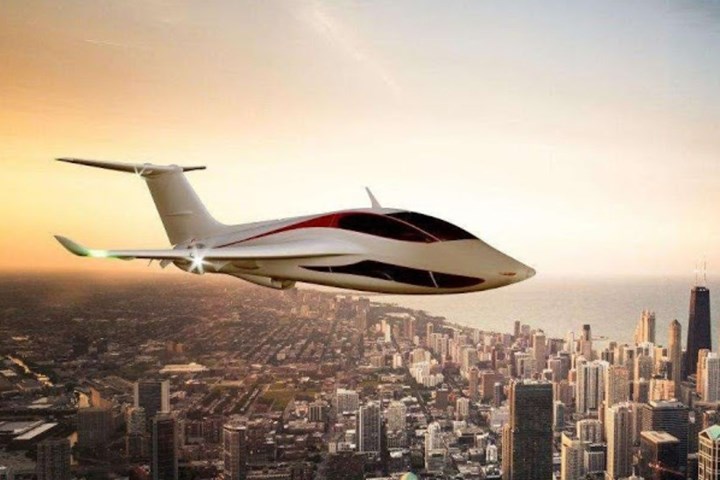Samad aerospace unveils luxury Q-Starling personal air vehicle
The hybrid-electric VTOL aircraft boasts all carbon fiber, a hybrid-electric turbo generator and a stylish, modern design.

Photo Credit: Samad aerospace
Samad aerospace (Bedfordshire, U.K.), the British hybrid eVTOL aviation company launch its concept for Q-Starling, a high-end personal air vehicle (PAV). The two-seat, all carbon fiber composite aircraft is said to take elements from both fast jets and Vertical Take-Off and Landing (VTOL) aircraft capabilities and can be flown by pilots with an anticipated appropriate class rating.
Samad aerospace says Q-Starling will be powered by a hybrid-electric turbo generator which will provide power for a large diameter hover fan and a fly-by-wire controlled reaction control system (RCS). The turbo generator will then provide forward thrust once the aircraft has transitioned from vertical flight.
Further, controlled by a comprehensive electronic flight system, the Q-Starling will have numerous and extensive safety systems in-built to prevent the aircraft from departing the flight envelope. In keeping with other ultra-light aircraft it will feature as a ballistic recovery system.
Samad says the aircraft is complete with a simplified control interface, and the cockpit is designed for the highest degree of comfort including additional transparencies and synthetic vision to enhance situational awareness. All carbon fiber materials are said to enable higher performance capabilities as well as enabling semi-aerobatic maneuvers.
The aircraft is expected to have a low entry barrier to private flight with an expected conversion requirement of around 10 hours for the average PPL.
“The Q-Starling will give owners the ultimate luxury in personal hybrid-electric flying. The efficient sustainable Q-Starling will give passengers unparalleled point-to-point mobility options,” says Dr. Seyed Mohseni, CEO of Samad aerospace.
Download the brochureQ-Starling.
Related Content
-
Plant tour: Teijin Carbon America Inc., Greenwood, S.C., U.S.
In 2018, Teijin broke ground on a facility that is reportedly the largest capacity carbon fiber line currently in existence. The line has been fully functional for nearly two years and has plenty of room for expansion.
-
Sulapac introduces Sulapac Flow 1.7 to replace PLA, ABS and PP in FDM, FGF
Available as filament and granules for extrusion, new wood composite matches properties yet is compostable, eliminates microplastics and reduces carbon footprint.
-
Plant tour: Albany Engineered Composites, Rochester, N.H., U.S.
Efficient, high-quality, well-controlled composites manufacturing at volume is the mantra for this 3D weaving specialist.












